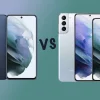Introduction The automotive industry is at a crossroads, witnessing a transformative shift in consumer preferences. While traditional car sales in the United States face a period of stagnation, the fervor for electric vehicles (EVs) is on an upward trajectory. This article delves into the impact of this transition, exploring how the burgeoning interest in EVs
Introduction
The automotive industry is at a crossroads, witnessing a transformative shift in consumer preferences. While traditional car sales in the United States face a period of stagnation, the fervor for electric vehicles (EVs) is on an upward trajectory. This article delves into the impact of this transition, exploring how the burgeoning interest in EVs is reshaping the landscape of personal transportation in the country.
Rise of Electric Vehicles Amid Sluggish Traditional Car Sales
The traditional automobile market in the U.S. has been experiencing a slowdown, influenced by various factors like economic fluctuations, supply chain disruptions, and evolving consumer behaviors. This section will elucidate on the reasons behind the slump in conventional car sales, analyzing market dynamics and consumer trends.
Factors Driving Adoption
Contrastingly, the allure of electric vehicles has been steadily increasing. Here, the article will highlight the driving forces behind the surge in EV interest. Factors such as environmental consciousness, government incentives, technological advancements, and the expanding infrastructure for EV charging will be explored in depth.

Image By:https://www.chase.com
Economic and Environmental Implications
This section will delve into the broader implications of this transition. Analyzing the economic impacts on automotive manufacturers, energy sectors, and job markets, while also evaluating the environmental benefits of a shift towards EVs, such as reduced carbon emissions and decreased reliance on fossil fuels.
Challenges and Roadblocks
Transitioning to an EV-dominated market is not without hurdles. Delve into challenges faced, including battery technology limitations, charging infrastructure gaps, cost barriers, and the transition of existing automotive workforce skills.
Policy Landscape and Government Initiatives
Government policies and incentives play a pivotal role in shaping the adoption of EVs. Discuss federal and state-level initiatives, subsidies, tax credits, and proposed regulations aimed at accelerating the EV transition.
Consumer Perspectives
Understanding the mindset of consumers is crucial. Highlight consumer attitudes towards EVs, addressing concerns about range anxiety, charging convenience, maintenance costs, and the overall ownership experience.

Image By:https://blog.carworldautomotive.com
Industry Response and Future Projections
Explore how traditional automakers are adapting to this evolving landscape. Discuss strategies adopted by car manufacturers to pivot towards EV production and their long-term forecasts for the industry.
Conclusion
The article will culminate by summarizing the changing dynamics in the automotive industry. Emphasize the pivotal role of EVs in shaping the future of transportation in the United States, while underlining the challenges that need to be addressed for a seamless transition.























Leave a Comment
Your email address will not be published. Required fields are marked with *